System Dynamics (SD) is an analysis paradigm for complex problem elicitation and policy design. Its modus operandi essentially consists of three phases: (1) a qualitative analysis of problems with a Systems Thinking framework to identify and map problem inputs, outputs, levels, interrelations, uncertainties, inconsistencies, etc. and (2) a quantitative phase in which qualitative maps are reduced to a set of mathematical entities (flows, levels, feedback loops, and delays) which end up in the assemblage of a system of coupled differential equations. Finally, (3) mathematical simulations are conducted on the model to study what changes in behavior are effectuated by changes in structure. SD is applied to attack problems exhibiting dynamical behavior in the engineering, social, management, economic, epidemiological, and physiological systems.
Syllabus (annually dynamic!)
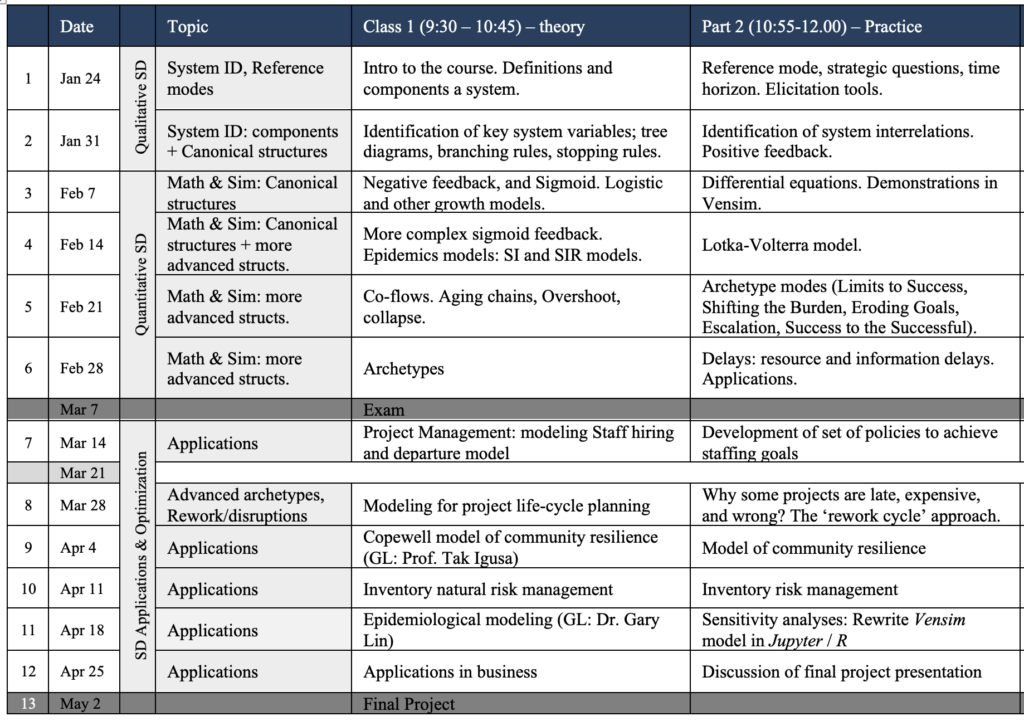
Case studies from class
Below some images from the problems studied in class.
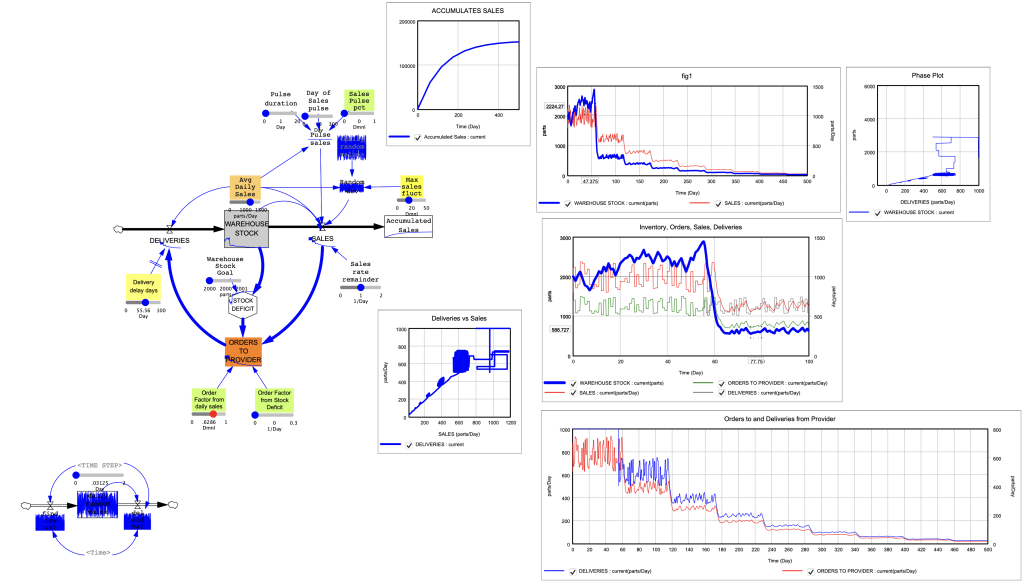
A supply chain problem that exhibits the inventory behavior to external shocks.
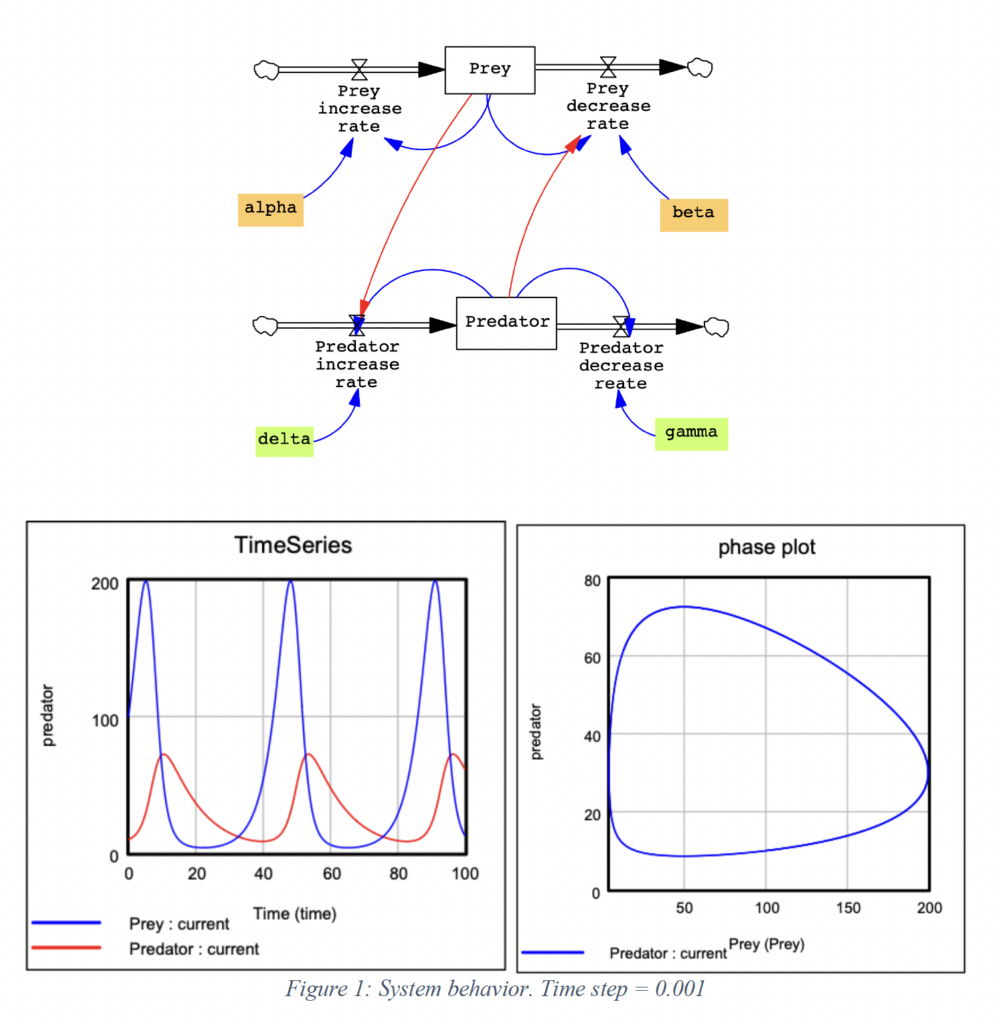
A classical ODE (predator/prey) problem modeled using System Dynamic (above) and behavior of equation parameters (below).
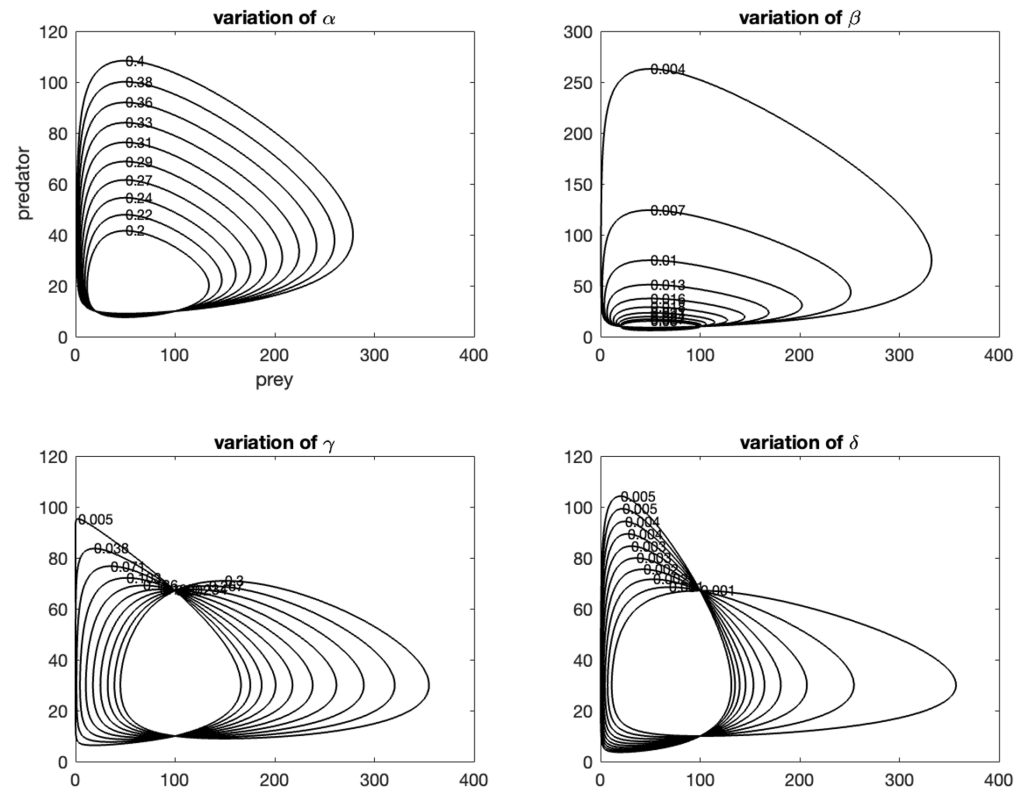
An interesting staffing problem with several subtleties.
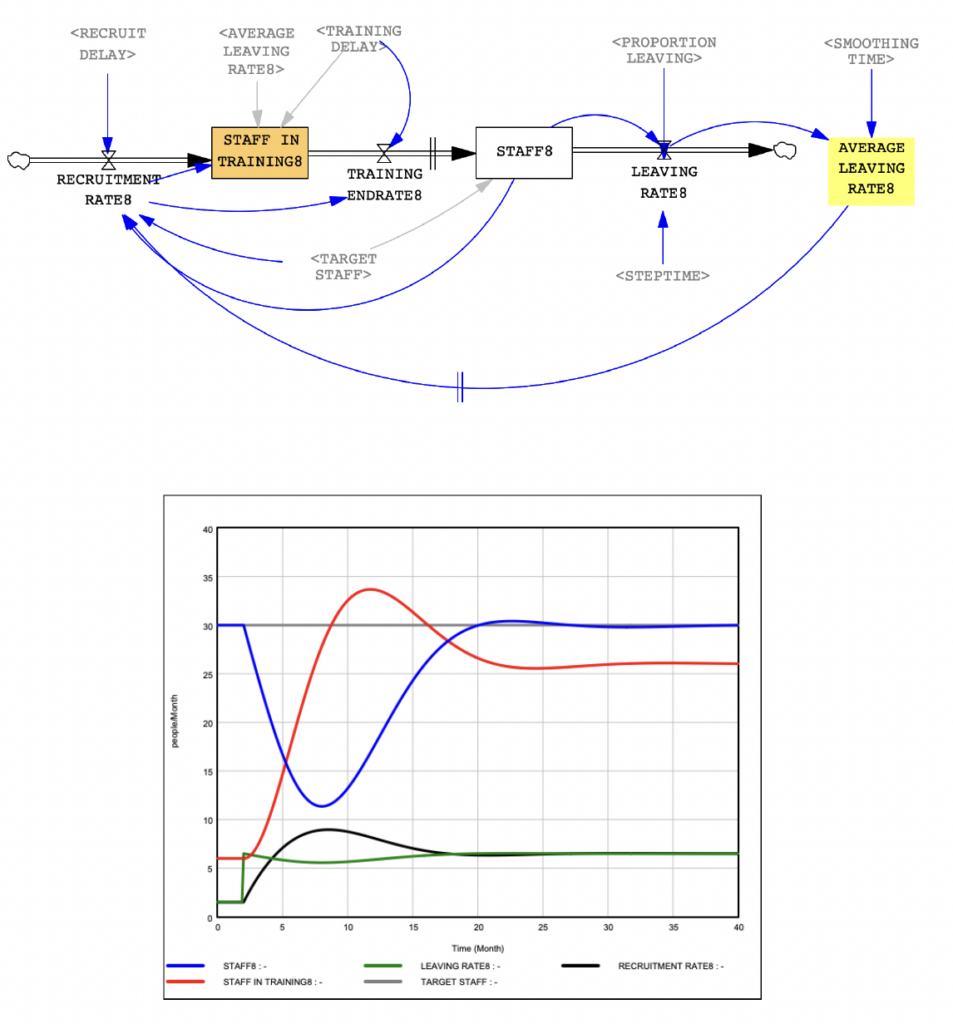
More info
- Taught in the Spring Semester at Homewood Campus
- Prereqs: Calculus II, some Probability and Simulation courses
- Grade: (1) One Exam, (2) Homework Assignments, (3) Final project, (4) Participation in Class
- Textbook: Chapters and Papers assigned.
- Software: Vensim, Matlab, R
